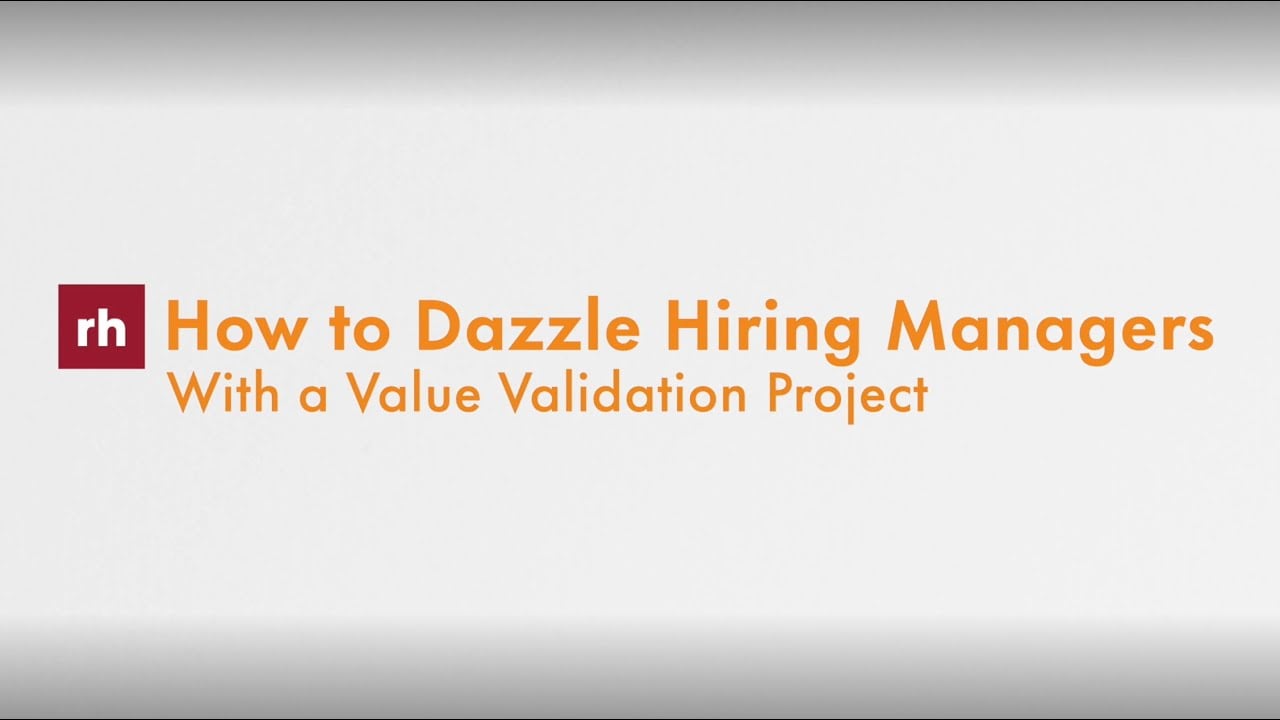Good news! There’s an opening for your dream job at a top company. Sobering reality: There are sure to be dozens of other candidates with similar qualifications — and maybe more experience — going for the same role. How can you stand out and land an interview? By demonstrating you have great ideas that could positively impact your potential employer. And one way to do that is by creating a value validation project (VVP).
A value validation project is a deliverable you create that can help you communicate to a hiring manager how you could specifically provide value to an organization if you were hired. (Blogger and career coach Austin Belcak is credited with coining the term value validation project.)
Examples of value validation projects range from surveying a cross-section of the company’s customers and presenting the findings in a slide deck to redesigning an app’s user interface to make it faster and more intuitive. So, just like a trailer creates excitement for a forthcoming movie, your value validation project gives a potential employer a sneak peek into what you would bring to the table.
Why use a Value Validation Project?
You may be wondering why you need a Value Validation Project, sometimes abbreviated as VVP, on top of the tried-and-tested methods of resumes and cover letters. After all, it’s extra work for you that no one has asked for. But think of it this way:
- In reality, it’s a small investment. A few hours of unpaid work could unlock the door to a rewarding, long-term career.
- You’re showing the company what they’re getting if they invest in you. Many hiring managers are risk-averse by nature and aware of the high costs of a bad hire. A strong value validation project builds confidence in the manager’s mind that you will deliver on the promise of your resume.
Some may wonder how a value validation project is different than an interview assignment. The latter is a practical task set by a hiring manager in addition to a traditional interview to learn more about a candidate’s skills and work ethic and evaluate how their abilities align with the job requirements.
On the other hand, a value validation project is your work from start to finish — concept, research, content and deliverable.
Learn seven easy steps to writing a great resume.
How to craft a Value Validation Project
Now that you know why a value validation project can be a job seeker’s secret weapon, how do you create one to help you land the job you want? Here are the main steps.
1. Research your prospective employer
Identify challenges, issues and new initiatives to build your project around. Potential sources include:
- The company’s website. The newsroom section of the site can yield a wealth of information. Research the company’s business plan and new initiatives, such as expansion into new markets or sustainability projects.
- Earnings calls and financial publications. If you’re applying to a public company, industry analysts can provide good insights into the organization’s most pressing challenges and opportunities.
- Customers. The honest feedback you’ll get will help you to identify common user issues.
- Current employees. These days, many employees talk shop and engage with their peers on social media channels like Twitter and LinkedIn. Look there for clues about the company’s present challenges and any new projects in the works from people discussing the company you’re targeting.
New to building a LinkedIn profile or just want to make your current profile better? Get tips in this post.
2. Find your areas of opportunity
Based on what you learn from your research, list problems you could help solve or opportunities you could help capitalize on, choosing one that highlights your particular skills that could be applied to the role you’re seeking.
Say you know the company is looking to expand. If you’re going for a marketing role, do a competitor analysis and add some suggestions on how the company could get more visibility. If you’re shooting for a sales position, come up with tailored pitches for the new target market.
3. Showcase your findings
Choose the most engaging way to present your project. A slide deck is usually the best medium, although a short video or an eye-catching website might work if you’re applying for a creative position. You need to convince the recruiter from the get-go that you’re the perfect fit for the job, so be concise, or they’ll lose interest.









